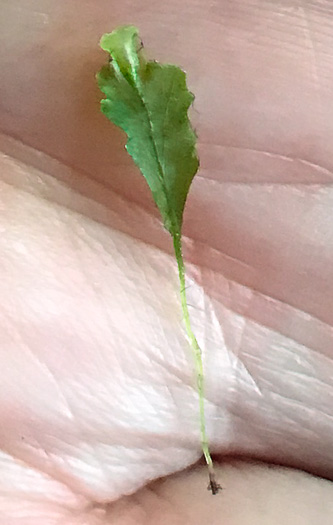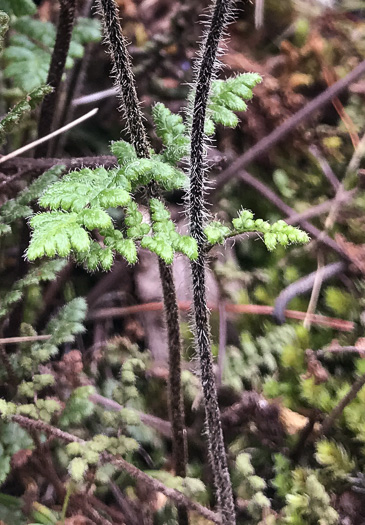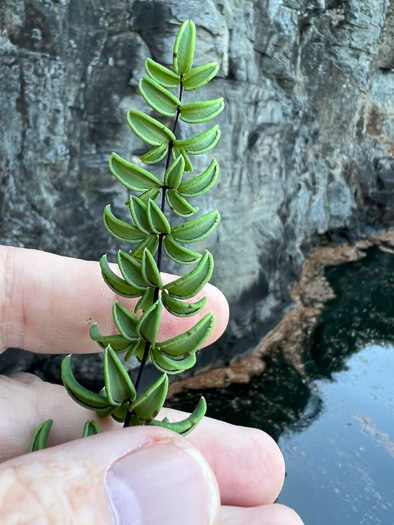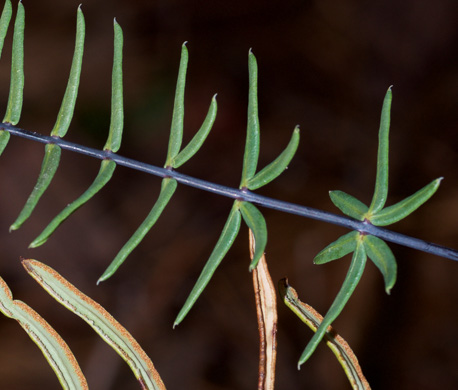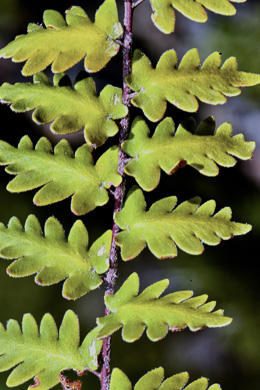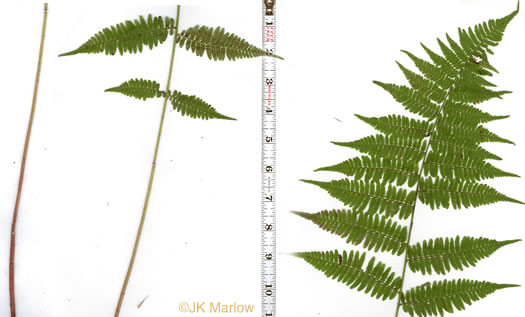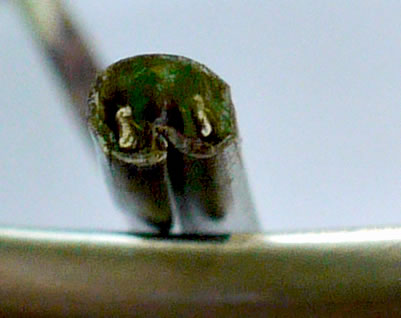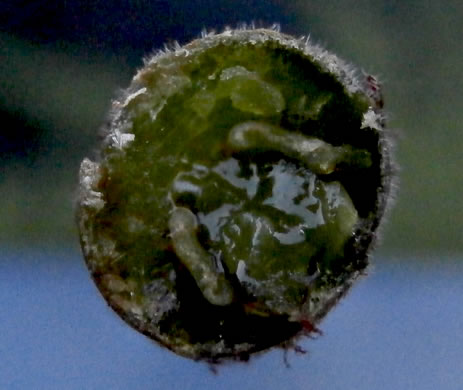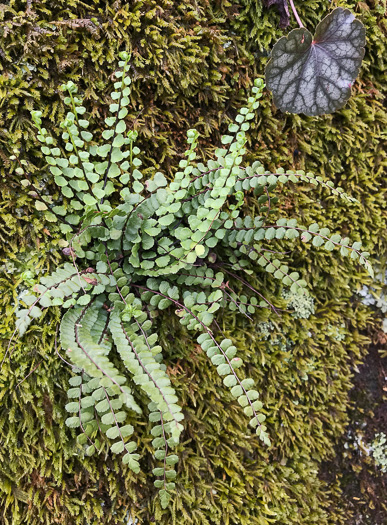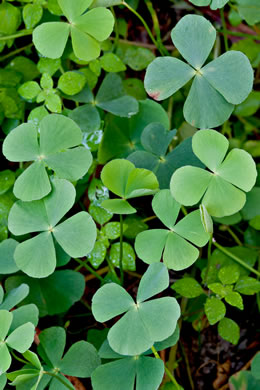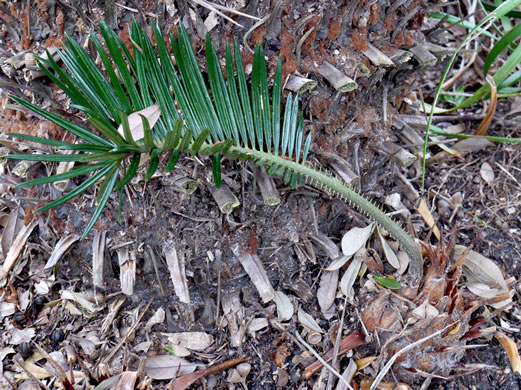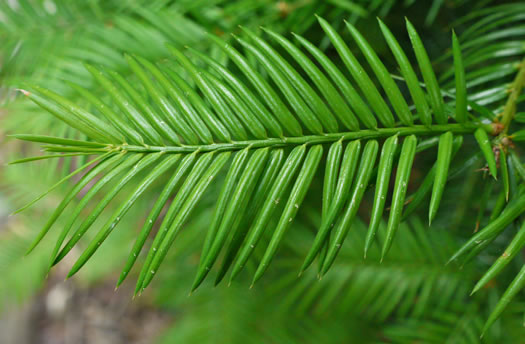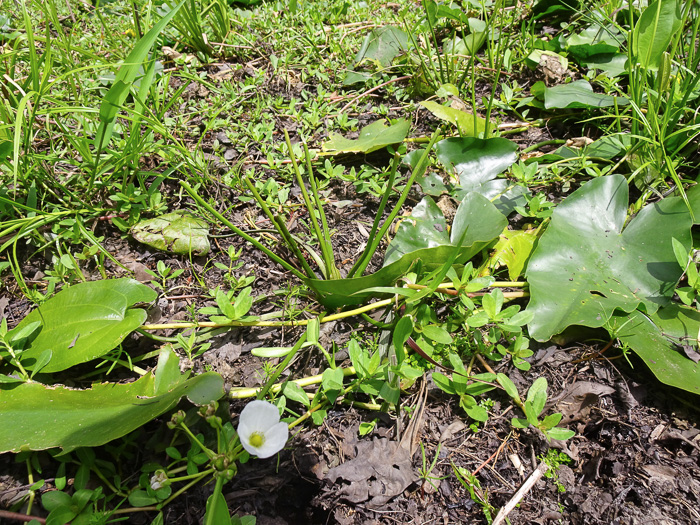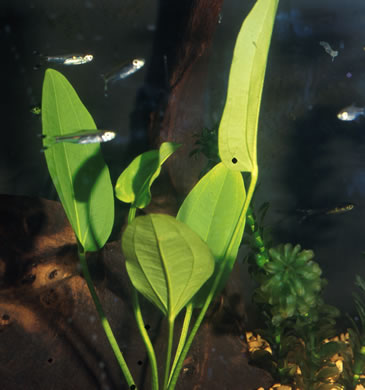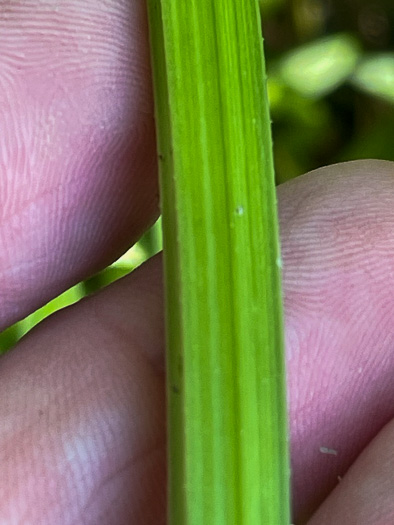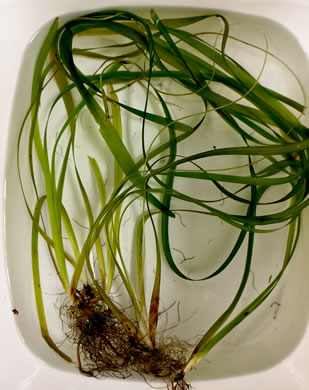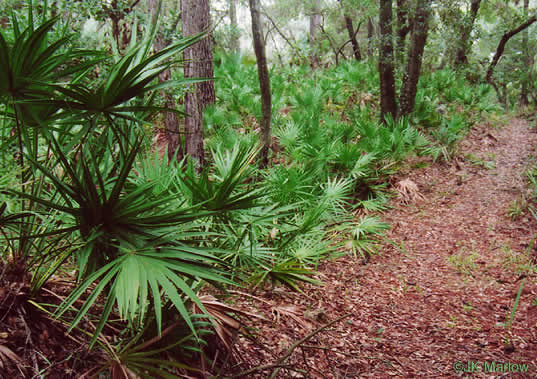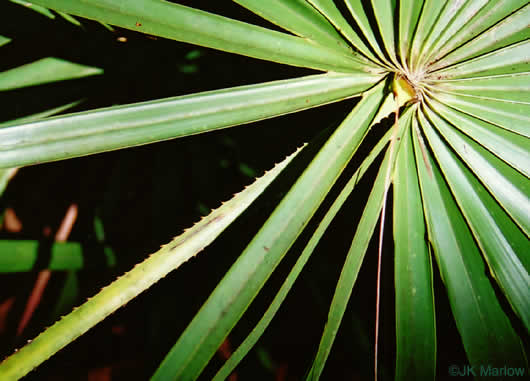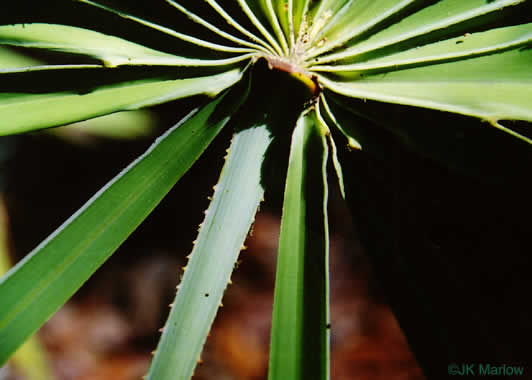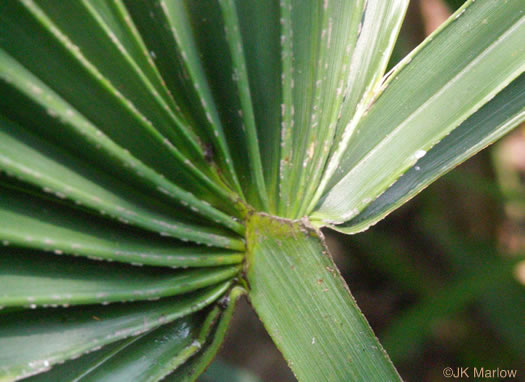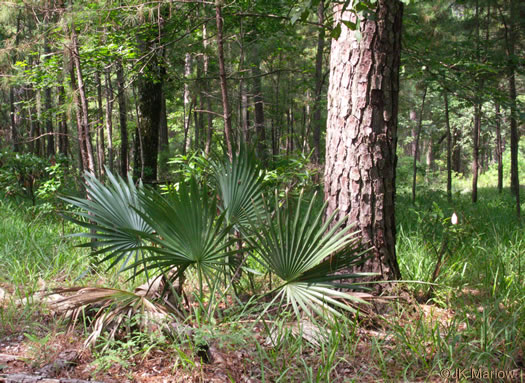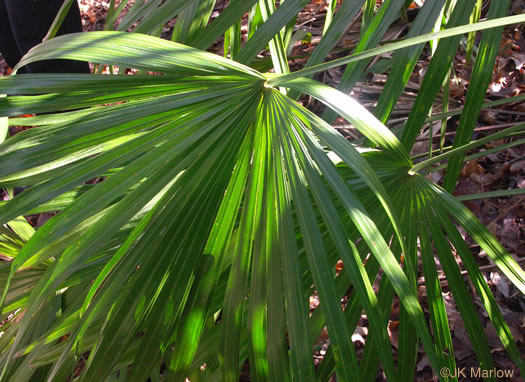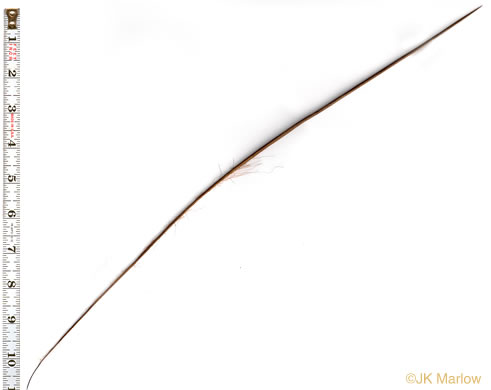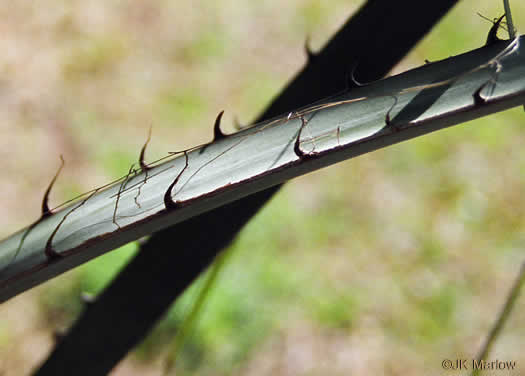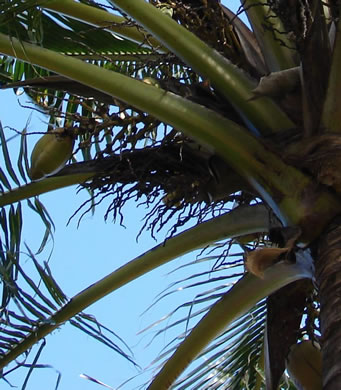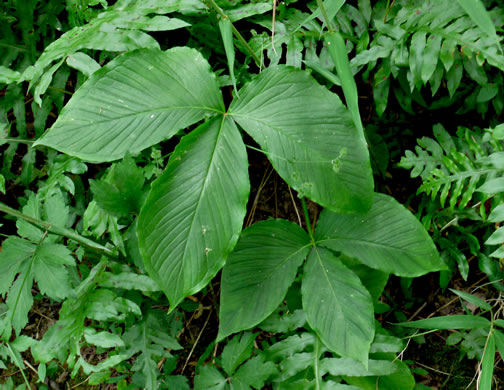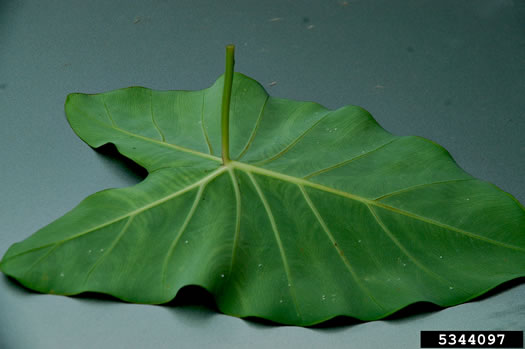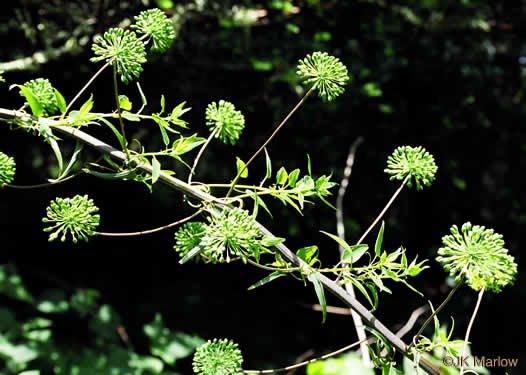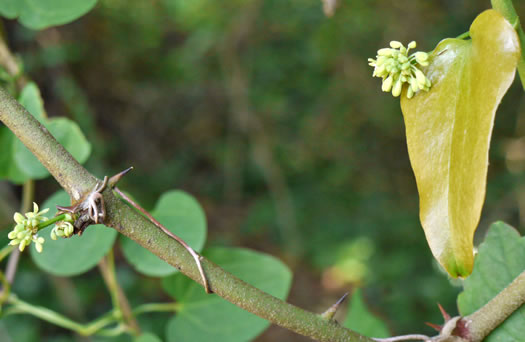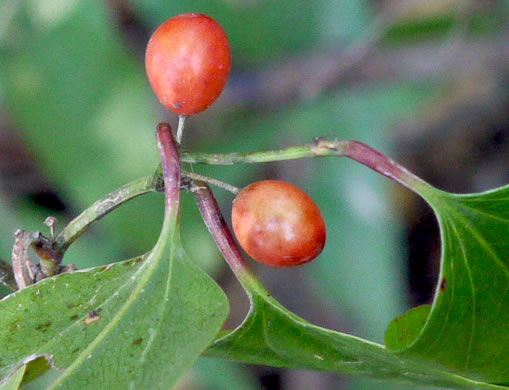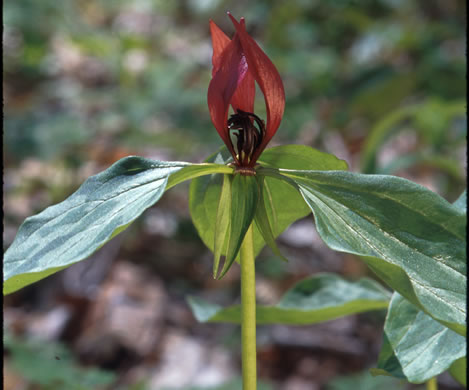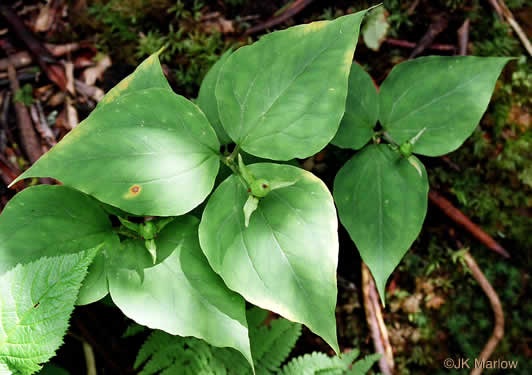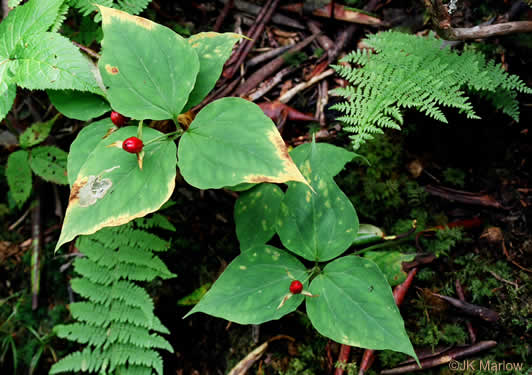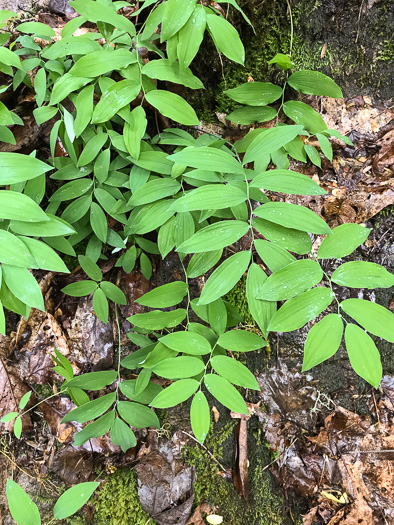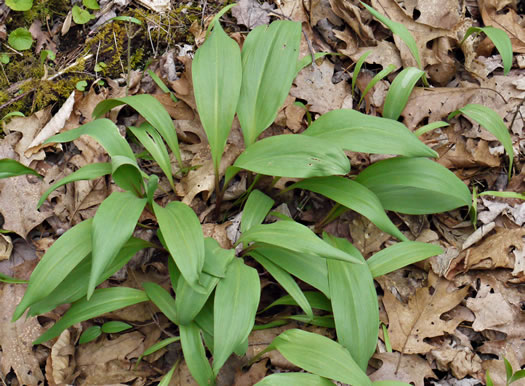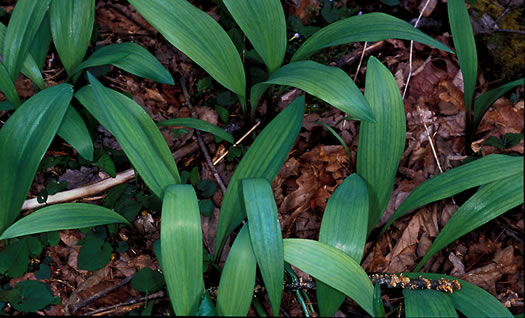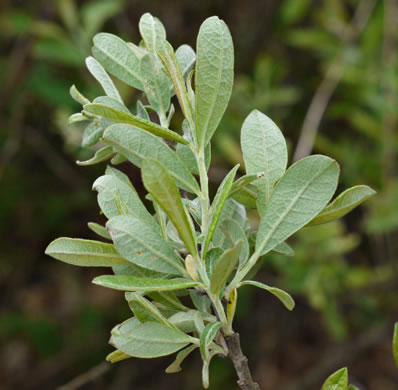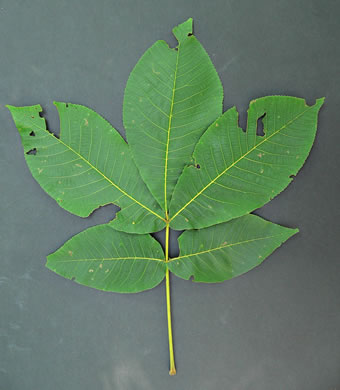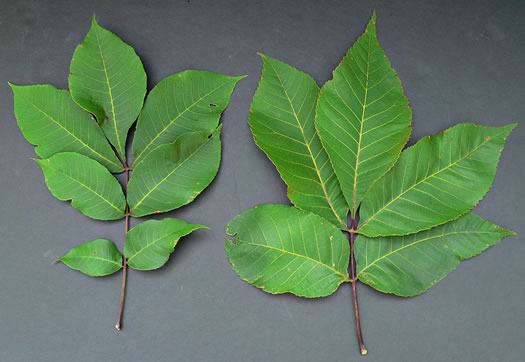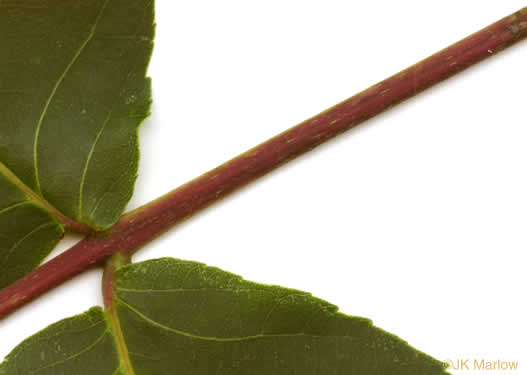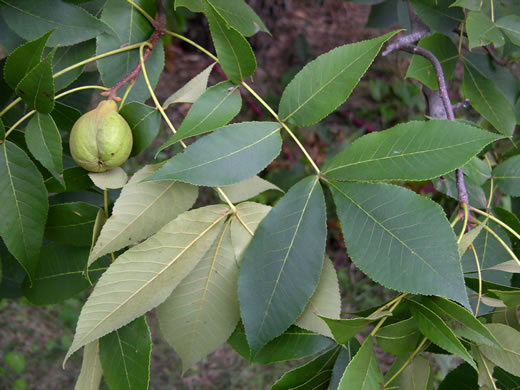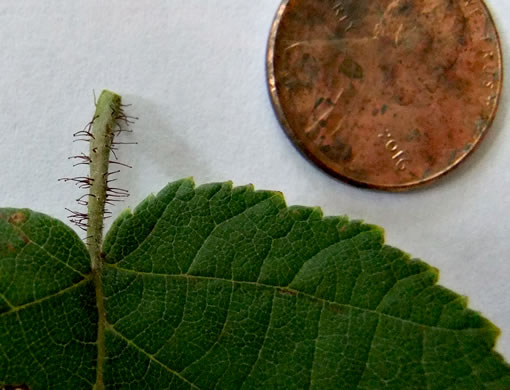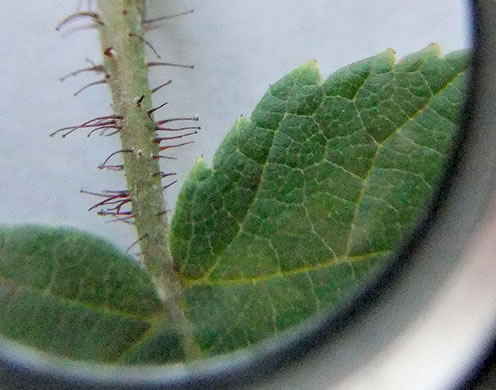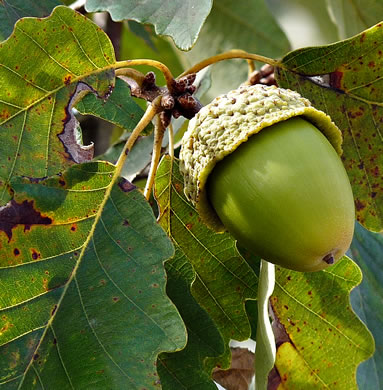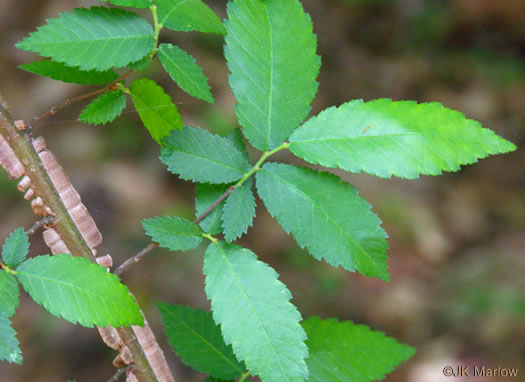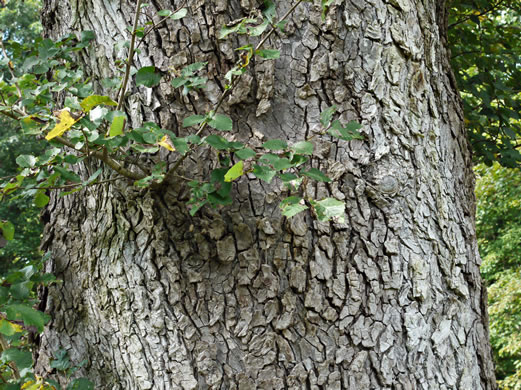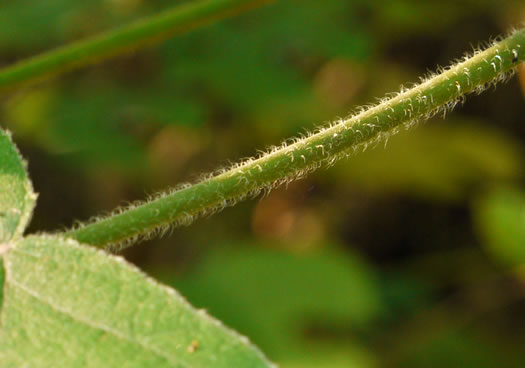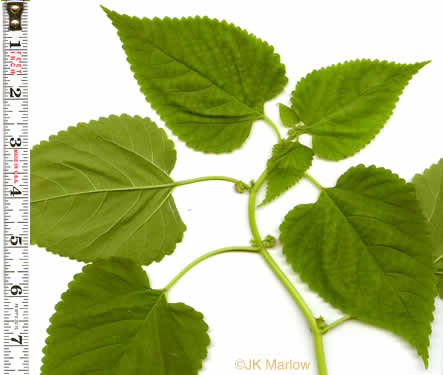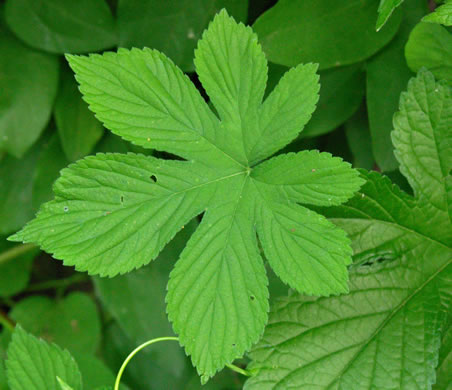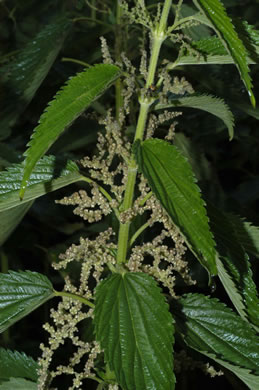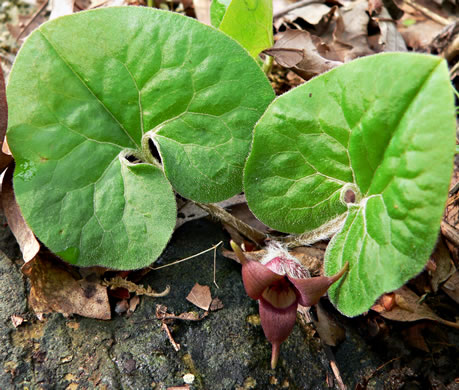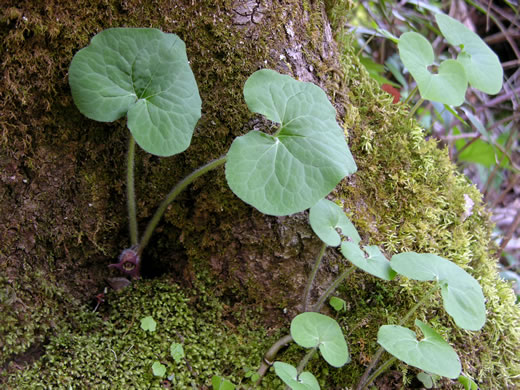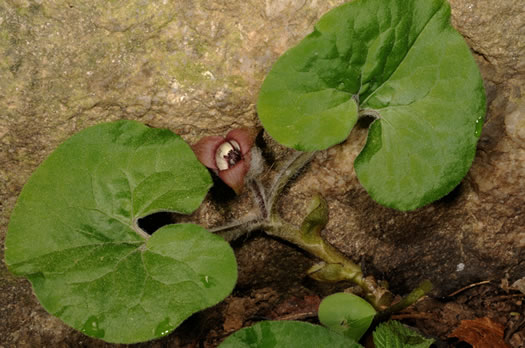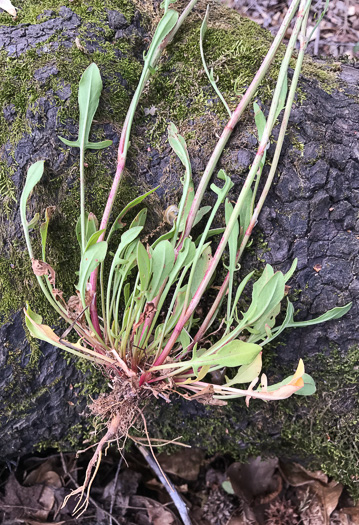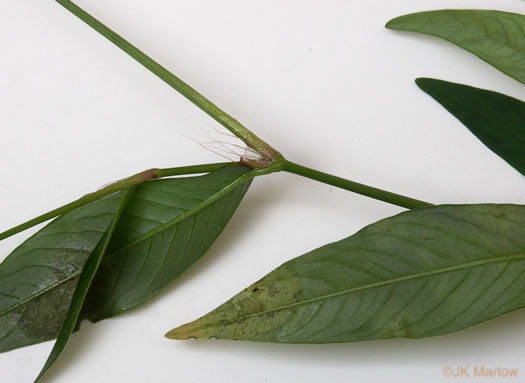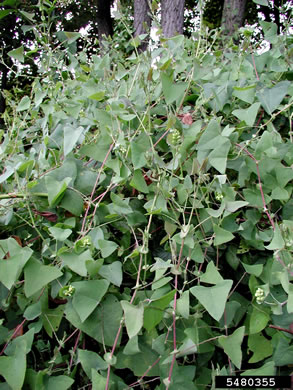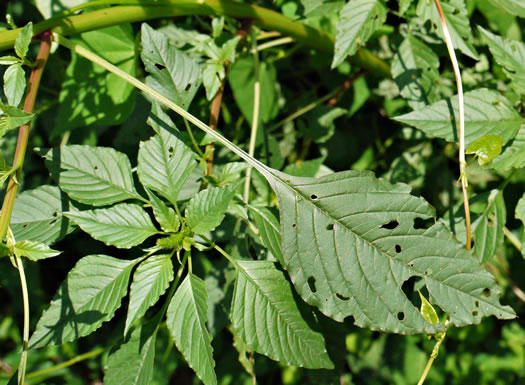Your search found 308 image(s) illustrating the term "petiole." For a written explanation, click on "petiole" in the Glossary.
PAGE 1 PAGE 2 PAGE 3 PAGE 4 PAGE 5 PAGE 6
To see larger pictures, click or hover over the thumbnails.
To go to the plant's detail page, click its name.
 Dwarf Filmy-fern,
Didymoglossum petersii
Dwarf Filmy-fern,
Didymoglossum petersii
Leaves elliptic to oblanceolate, simple; petioles nearly as long as blades, per Flora of North America.
 Hairy Lipfern,
Myriopteris lanosa
Hairy Lipfern,
Myriopteris lanosa
Petiole & rachis with hairs only (vs. M. tomentosa with a mixture of flattened scales and hairs), per Weakley's Flora (2022).
 Wright's Cliffbrake,
Pellaea wrightiana
Wright's Cliffbrake,
Pellaea wrightiana
Petiole dark brown, lustrous. Ultimate segments 5-20mm [in length], per Flora of North America.
 Arizona Cliffbrake,
Pellaea ternifolia ssp. arizonica
Arizona Cliffbrake,
Pellaea ternifolia ssp. arizonica
Basal pinnae of 3 incompletely divided segments. Petiole dk purple to black, per The Ferns and Lycophytes of Texas (Diggs & Lipscomb, 2014).
 Wavy Cloak Fern,
Astrolepis sinuata ssp. sinuata
Wavy Cloak Fern,
Astrolepis sinuata ssp. sinuata
Pinnae alternate, oblong with short petioles, cut 1/3 to 1/2 way to midvein, per Field Guide to the Ferns and Other Pteridophytes of Georgia (Snyder & Bruce, 1986).
 Southern Lady Fern,
Athyrium asplenioides
Southern Lady Fern,
Athyrium asplenioides
Petioles as long as blade, reddish or light green. Blade widest @ 2nd pinna, per Ferns of the Smokies (Evans, 2005).
 Mariana Maiden-fern,
Macrothelypteris torresiana
Mariana Maiden-fern,
Macrothelypteris torresiana
Petiole in cross section, after a day drying in the plant press.
 Mariana Maiden-fern,
Macrothelypteris torresiana
Mariana Maiden-fern,
Macrothelypteris torresiana
Petiole in cross section with 2 crescent-shaped vascular bundles at base, per Flora of North America.
 Maidenhair Spleenwort,
Asplenium trichomanes
Maidenhair Spleenwort,
Asplenium trichomanes
Petiole and rachis reddish-brown or blackish-brown, shiny, per The Ferns and Lycophytes of Texas (Diggs & Lipscomb, 2014).
 Dwarf Waterclover,
Marsilea minuta
Dwarf Waterclover,
Marsilea minuta
Leaves clover-like, the 4 leaflets borne at the summit of the petiole, per Weakley's Flora (2015).
 Sago-palm,
Cycas revoluta
Sago-palm,
Cycas revoluta
Petiole subtetragonal in cross section, 10-20cm, 6-18 spines along each side, per Flora of China.
 Florida Torreya,
Torreya taxifolia
Florida Torreya,
Torreya taxifolia
Leaves stiff with a short petiole-like constriction, often slightly curved, per Trees of the Southeastern United States (Duncan & Duncan, 1988).
 Creeping Burhead,
Echinodorus cordifolius
Creeping Burhead,
Echinodorus cordifolius
Basal leaves with long petioles & heart-shaped blades 1.2-6" wide, 2-8" long, per Wildflowers of Tennessee (Carman, 2005).
 Creeping Burhead,
Echinodorus cordifolius
Creeping Burhead,
Echinodorus cordifolius
Leaves clustered, erect and rising above water surface on long, 3-sided petioles, per Wildflowers of the Atlantic Southeast (Cotterman, Waitt, & Weakley, 2019).
 Appalachian Arrowhead,
Sagittaria australis
Appalachian Arrowhead,
Sagittaria australis
Petiole sharply 5-wing-angled in cross-section, per Weakley's Flora (2023).
 American Eelgrass,
Vallisneria americana
American Eelgrass,
Vallisneria americana
Leaves straplike, elongate, linear, not differentiated into petiole and blade, per Weakley's Flora.
 Saw Palmetto,
Serenoa repens
Saw Palmetto,
Serenoa repens
Stem horizontal, atop or just below soil surface. Petioles often w prickles, per Forest Plants of the Southeast and Their Wildlife Uses (Miller & Miller, 2005).
 Saw Palmetto,
Serenoa repens
Saw Palmetto,
Serenoa repens
The petiole is armed with stiff spines, per Trees of the Southeastern United States (Duncan & Duncan, 1988).
 Saw Palmetto,
Serenoa repens
Saw Palmetto,
Serenoa repens
Petiole ends abruptly in the blade base, per Trees of the Southeastern United States (Duncan & Duncan, 1988).
 Dwarf Palmetto,
Sabal minor
Dwarf Palmetto,
Sabal minor
Petiole unarmed, per Trees of the Southeastern United States (Duncan & Duncan, 1988).
 Dwarf Palmetto,
Sabal minor
Dwarf Palmetto,
Sabal minor
Stem below ground (rarely emerging). Petioles long and 3-angled, per Forest Plants of the Southeast and Their Wildlife Uses (Miller & Miller, 2005).
 Needle Palm,
Rhapidophyllum hystrix
Needle Palm,
Rhapidophyllum hystrix
Leaves fan-shaped, segments faintly corrugated; petioles 3-angled, per Forest Plants of the Southeast and Their Wildlife Uses (Miller & Miller, 2005).
 Needle Palm,
Rhapidophyllum hystrix
Needle Palm,
Rhapidophyllum hystrix
Sharp spines project from petiole base, from stolons, per Forest Plants of the Southeast and Their Wildlife Uses (Miller & Miller, 2005).
 Pindo Palm,
Butia odorata
Pindo Palm,
Butia odorata
The petioles are armed with curved spines (vs. those of Cocos unarmed), per Weakley's Flora (2015).
 Coconut Palm,
Cocos nucifera
Coconut Palm,
Cocos nucifera
Petiole unarmed (vs. that of Butia and Phoenix with petiolar spines), per Weakley's Flora (2015).
 Green Dragon,
Pinellia tripartita
Green Dragon,
Pinellia tripartita
Each upright leaf petiole is terminated by a single trifoliate green leaf, per www.missouribotanicalgarden.org.
 Elephant's-ear,
Colocasia esculenta
Elephant's-ear,
Colocasia esculenta
Leaves are held on 3' long petioles that attach in the center of the leaf, per Invasive Plants, Guide to Identification, Impacts and Control (Kaufman & Kaufman, 2007).
 Common Carrionflower,
Smilax herbacea
Common Carrionflower,
Smilax herbacea
Peduncles 5-8x long as the subtending petioles, per Weakley's Flora.
 Fringed Greenbrier,
Smilax bona-nox var. bona-nox
Fringed Greenbrier,
Smilax bona-nox var. bona-nox
Stalk of the umbel > 1.5x as long as the subtending leaf petiole, per Weakley's Flora (2012).
 Coral Greenbrier,
Smilax walteri
Coral Greenbrier,
Smilax walteri
Leaves often with a red mid-vein and petiole; berries bright red, per Weakley's Flora (2022).
 Prairie Trillium,
Trillium recurvatum
Prairie Trillium,
Trillium recurvatum
Sepals become sharply recurved and extend downward between petioles, per Wildflowers of Tennessee, the Ohio Valley, and the Southern Appalachians (Horn, Cathcart, Hemmerly, & Duhl, 2005).
 Painted Trillium,
Trillidium undulatum
Painted Trillium,
Trillidium undulatum
Leaves are clearly petioled and acuminate, per Wildflowers of the Eastern United States (Duncan & Duncan, 1999).
 Painted Trillium,
Trillidium undulatum
Painted Trillium,
Trillidium undulatum
Petioles 3-20 mm long; pedicels 1.5-5.8 cm long, per Vascular Flora of the Carolinas (Radford, Ahles, & Bell, 1968).
 Downy Solomon’s Seal,
Polygonatum pubescens
Downy Solomon’s Seal,
Polygonatum pubescens
Leaves narrowly elliptical to oval, short-petioled, per Wildflowers of the Atlantic Southeast (Cotterman, Waitt, & Weakley, 2019).
 Red Ramps,
Allium tricoccum
Red Ramps,
Allium tricoccum
Leaves usually absent at anthesis, blade tapering to long, slender petiole, per Flora of North America.
 Red Ramps,
Allium tricoccum
Red Ramps,
Allium tricoccum
2 glaucous leaves, with petioles 2-7cm long, are present from April into June, per Vascular Flora of the Carolinas (Radford, Ahles, & Bell, 1968).
 Upland Willow,
Salix humilis
Upland Willow,
Salix humilis
Leaves pale and veiny below, margin slightly revolute, petioles hairy, per Woody Plants of the Blue Ridge (Lance).
 Common Shagbark Hickory,
Carya ovata
Common Shagbark Hickory,
Carya ovata
Crushed lvs w faint apple smell unlike other hickories. Petioles pubescent, per Native Trees of the Southeast, An Identification Guide (Kirkman, Brown, & Leopold, 2007).
 Red Hickory,
Carya ovalis
Red Hickory,
Carya ovalis
Leaves with (5-)7 leaflets, pubescent beneath; petiole reddish, per Weakley's Flora.
 Red Hickory,
Carya ovalis
Red Hickory,
Carya ovalis
Petiole reddish, per Weakley's Flora.
 Black Hickory,
Carya texana
Black Hickory,
Carya texana
Only hickory w tufted rust-colored hair on buds, petioles, leaf undersides, per Trees of the Southeastern United States (Duncan & Duncan, 1988).
 American Hazelnut,
Corylus americana
American Hazelnut,
Corylus americana
Petioles pubescent and glandular pubescent, 0.2-1.8cm long, per Vascular Flora of the Carolinas (Radford, Ahles, & Bell, 1968).
 American Hazelnut,
Corylus americana
American Hazelnut,
Corylus americana
Young twigs and petioles stipitate-glandular (vs. C. cornuta's glandless), per Weakley's Flora (2015).
 Common Chinquapin,
Castanea pumila
Common Chinquapin,
Castanea pumila
Fruit husk spines and leaf petioles are usually less than 1cm long, per Woody Plants of the Southeastern US: A Winter Guide (Lance, 2004).
 Rock Chestnut Oak,
Quercus montana
Rock Chestnut Oak,
Quercus montana
Yellow petiole 10-32mm long, per Field Guide to Native Oak Species of Eastern North America (Stein, Binion, & Acciavatti, 2003).
 Dwarf Live Oak,
Quercus minima
Dwarf Live Oak,
Quercus minima
Leaves obovate or oblanceolate, with a very short petiole, base cuneate, per Field Guide to Native Oak Species of Eastern North America (Stein, Binion, & Acciavatti, 2003).
 Winged Elm,
Ulmus alata
Winged Elm,
Ulmus alata
Petioles usually 1-2mm long, per Vascular Flora of the Carolinas (Radford, Ahles, & Bell, 1968).
 Wych Elm,
Ulmus glabra
Wych Elm,
Ulmus glabra
Leaf base strongly oblique, lowermost lobe overlapping, covering petiole, per Flora of North America.
 Paper Mulberry,
Broussonetia papyrifera
Paper Mulberry,
Broussonetia papyrifera
Twigs & petioles have long, spreading, glassily transparent hairs, per Native Trees of the Southeast, An Identification Guide (Kirkman, Brown, & Leopold, 2007).
 Mulberry-weed,
Fatoua villosa
Mulberry-weed,
Fatoua villosa
Alternate, ovate leaves with cordate bases, borne on long petioles (about as long as leaf blade), per Weakley's Flora (2022).
 Japanese Hops,
Humulus scandens
Japanese Hops,
Humulus scandens
Leaves are rough to the touch & occur on long petioles up to 8" in length, per Invasive Exotic Plants of North Carolina (Smith, 2008).
 European Stinging Nettle,
Urtica dioica ssp. dioica
European Stinging Nettle,
Urtica dioica ssp. dioica
Inflorescences usually surpassing the subtending leaf petiole, per Weakley's Flora.
 Common Wild Ginger,
Asarum canadense
Common Wild Ginger,
Asarum canadense
Leaves pubescent, petioles villous, per Vascular Flora of the Carolinas (Radford, Ahles, & Bell, 1968).
 Common Wild Ginger,
Asarum canadense
Common Wild Ginger,
Asarum canadense
Each plant has 2 kidney-shaped leaves with cordate bases, on long petioles, per Wildflowers of the Southern Mountains (Smith, 1998).
 Reflexed Wild Ginger,
Asarum reflexum
Reflexed Wild Ginger,
Asarum reflexum
Flower solitary, arising between the petioles. Petioles villous, per Vascular Flora of the Carolinas (Radford, Ahles, & Bell, 1968).
 Sheep Sorrel,
Acetosa acetosella
Sheep Sorrel,
Acetosa acetosella
Well-developed leaves with sagittate base (the lobes pointing downward, ~ parallel to petiole), per Weakley's Flora (2022).
 Wild Dock,
Acetosa hastatula
Wild Dock,
Acetosa hastatula
Well-developed leaves with hastate base (the lobes divergent, at right angle to the petiole), per Weakley's Flora (2022).
 Longbristle Smartweed,
Persicaria longiseta
Longbristle Smartweed,
Persicaria longiseta
Base of leaf is cuneate, petiole 1-5 mm long, per Vascular Flora of the Carolinas (Radford, Ahles, & Bell, 1968).
 Asiatic Tearthumb,
Persicaria perfoliata
Asiatic Tearthumb,
Persicaria perfoliata
Stem, petioles, lower surface of major leaf veins w abundant recurved prickles, per Weakley's Flora.
 Smooth Pigweed,
Amaranthus hybridus ssp. hybridus
Smooth Pigweed,
Amaranthus hybridus ssp. hybridus
Blade ovate, rhombic-ovate, or lanceolate; petiole half or as long as blade, per Flora of North America.

